Network Effects: Allianz CIO Ralf Schneider on the New Hard Sell
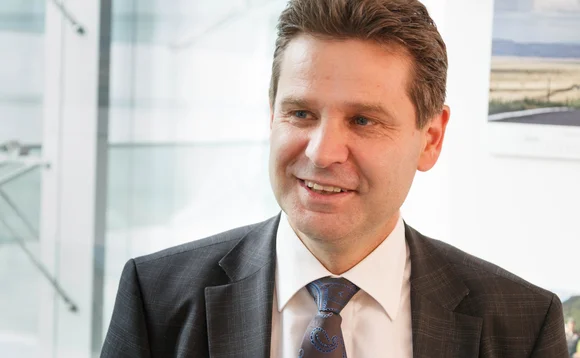
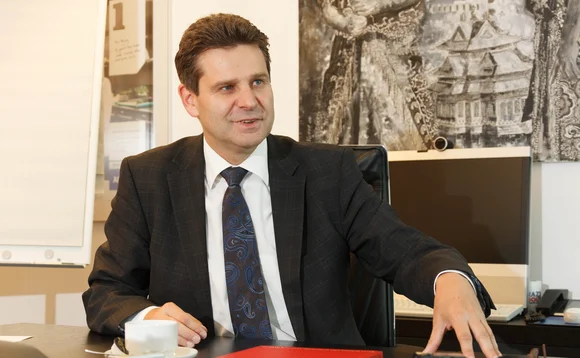
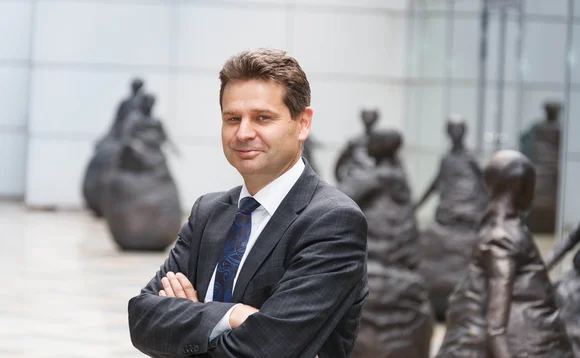
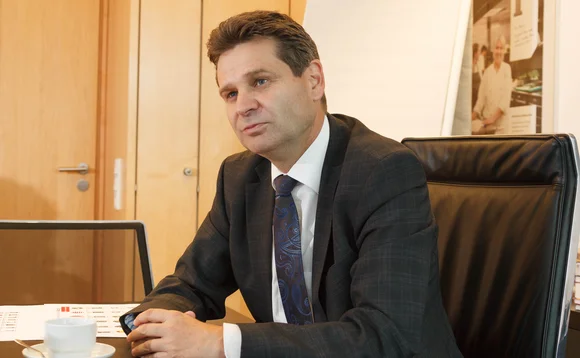

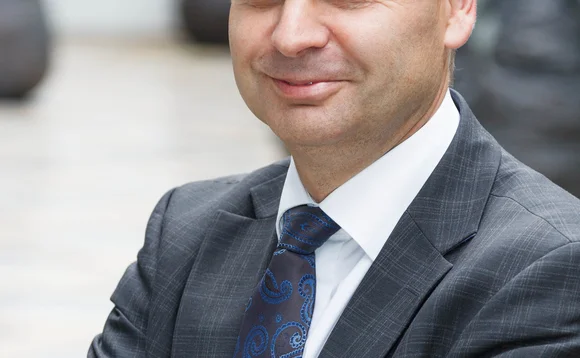
Facing a boardroom table in Ralf Schneider's office in Munich is a large, Salvador Dalí-like print, portraying a king, his fortress, and seven generals surrounded by swirling, impending doom. Artfully grotesque─and perfectly incongruous above a more mundane video-conferencing device─it almost begs for a reaction here in a city that is now more newsworthy for artwork hidden out of sight. One visitor recently remarked about the print: "It's quite disturbing, isn't it?" If this isn't indication enough, though, that Schneider is slightly different than your average chief technologist, the CIO's well-recited rejoinder seals it. "Oh, that? It makes me feel safe," he says with straight face.
It's an appropriate answer for an executive at Europe's largest insurance firm, and now the third-largest money manager by assets under management globally, at $2.44 trillion. Allianz's business model, after all, is foremost about providing protection in a volatile and uncertain world, by productizing underwriting expertise and deploying actuarial science using targeted, client-based methodology. Backing the firm's more than 70 global locations are about 10,000 technology staff, and getting them to sync up would seem a daunting proposition. At Allianz's labyrinthine home off the Bavarian capital's famed Englischer Garten, Schneider has made that his personal cause.
Go Rafting
Some executives have tunnel vision, shepherding through a big idea well before its time; others are all about numbers. Schneider is visual. He'll ask you to draw a picture─but he won't be much interested in its objects or their correct proportion, so much as the way they are interrelated, and positive network effects produced.
Another poster adorning the walls in Schneider's office─this one self-produced and far less foreboding─pays homage to the CIO's love for whitewater rafting. It also serves as a good analogy for his path to the firm that started in his native Franconia, in Northern Bavaria, with an academic trajectory. "Originally, I was fascinated by mathematics," he says. "It's a limitless study, moving from theoretical to real and applied math disciplines, and in that, you learn most of all to manage frustration. Like rafting, the better you are at it, the more problems arise."
Along the way, Schneider added computer science, finishing a PhD in applied database applications, indexing, and storage techniques that could produce practical outcomes. "I was especially happy with a project we did joining spatial objects, a tool that eventually was implemented for Oracle 10. But it was a public thing, so we made no money," he says. "I thought I had a good sense for where the gold nuggets are─the real technology problems─but having decades of professorship ahead of me, working that way, seemed like too much. So on a colleague's advice, at 31, I took a sabbatical and jumped to Allianz. I essentially canceled my academic career soon after," Schneider says. That was in 1995, and he hasn't looked back.
As CIO at a place the size of Allianz, you can’t really steer from the top—it’s about creating a network, similar to an orchestra. Obviously, the conductor is important; yet I believe that, ultimately, the power comes from the ones playing the music. – Ralf Schneider.
Schneider's training at Allianz amounted to an intensive short course in insurance, starting at the very beginning─learning how to sell policies─just as the platforms for doing so were becoming more technically enabled. "It's the only way to understand our business, and at that time no one managing our IT had that kind of exposure," he explains. He moved on to manage Allianz's customer interface and its e-commerce platform, before taking on its back-office and enterprise infrastructure for Germany, and finally being named CIO for the group in 2010. "At each step, I was the youngest to be appointed to the position," Schneider adds.
Layering
Like other multinational insurers, Allianz has grown steadily through acquisition with separate property and casualty (P&C), life and health, and asset management arms, each gaining a roughly equal share of its revenue. For comparison's sake, a well-established Forbes methodology puts the firm's total size today ahead of Bank of America and Goldman Sachs, as well as Microsoft, IBM, and neighboring Munich-based giants, Siemens and BMW Group. For that matter, Allianz has always been historically global, as well: Its Fireman's Fund, for example, is one of Hollywood's largest underwriters today, and helped insure the construction of the Golden Gate Bridge.
To match that growth and dispersion, the firm has established a separate Allianz Managed Operations and Services (AMOS) arm responsible for enterprise IT and operations, which, with Schneider's guidance, is constructing what the CIO calls "shared experience." But despite its unsexy name, AMOS is not a mere support function─it is a coordinating layer on top of business-specific IT, and a substantial one at that.
Schneider's biggest move so far has proven a complex math problem: reducing the entirety of the firm's 140 datacenters down to six─two in the US, three in Europe, and one in Asia. In the process, Allianz will harmonize its core business applications across 71 business units, such that 95 percent of its apps are run from a single private cloud-based architecture a decade from now. "Schneider is always seeking out added customer value," says Martin Elsperman, AMOS' head of IT operations. "To meet the needs of changing client behavior as well as security, he long ago set the objective of the private cloud."
Consolidation of this magnitude is unusual for any buy-side organization; for an insurance giant, it is virtually unheard of. "None of our closest competitors really do this yet," he says. (Three of them include Zurich, Axa, and Generali.) "It's truly a global transformation, investing €1 billion over five years with infrastructure as the vehicle, and harmonization as the objective. Our controller obviously is very intent on seeing that not burned through, and constructing a new network with 144,000 employees serving 78 million customers becomes a nightmare if not done right," Schneider explains.
The New ‘Hard Sell'
The project has moved forward with four imperatives, the first pair of which are fairly standard for today's financial IT: more real-time informational speed, and greater transparency into clients' set of products. The latter two are slightly different. The first─well-developed access management─reflects Allianz's heritage and is a non-negotiable. "Customer trust, which we value above all, has now become squarely the responsibility of the CIO, and that has fascinated me with the pushback─particularly in Germany─against the National Security Agency (NSA) and other privacy breaches," Schneider says, referring to the recent unauthorized publication of NSA documents that revealed US surveillance activities. "We're at the boardroom table because of that, and it's something I feel very strongly that we have to deliver."
The second─support for visualization─is more about imagining a future sales model, the CIO says. "Placing a priority there recognizes the value in digital isn't territory or profit per se, but attention. Jumping out of a window can gain you attention, of course─for a couple seconds. What we're after is sustained awareness."
To achieve it, Allianz continues to invest in predictive analytics overlaying the core SAS and SAP-based policy administration and accounting platforms for its insurance lines, to help anticipate its corporate and retail clients' needs, and extending what in big data circles is known as customer lifetime value. "When I first started, the belief in insurance was that it's totally local and that it's all about hard-selling," Schneider says. "Real-time analytics totally change that game. Earlier this summer we were in Silicon Valley visiting Stanford University, and then in Miami with firms like Reddit and LinkedIn, as well as the major banks, and the question is being asked everywhere about how to help data scientists properly take advantage of Apache Hadoop or Jive, whether in-house or to cooperate with externals, to push that change forward. You won't always have time to build capacity around these things on your own, or you may not want to, but understanding them is crucial. No one will work with you if you don't have a clue."
Cross-Pollination
Meanwhile, asset management was created as the third business division of Allianz in 1998. Though it forms an integral part of Allianz's overall business and is a large contributor to corporate earnings today, its information technology stands apart in many aspects. Insurers are experts at managing their own liabilities, investment managers require a different set up.
A few years after Schneider joined Allianz, in 2000, the company purchased a controlling stake in Newport Beach, Ca.-based Pacific Investment Management Corporation (Pimco), the world's largest bond investor, with currently about €1.5 trillion ($2.0 trillion) assets under management, which now operates alongside with the Allianz Global Investors (AllianzGI) with €322 billion ($435 billion) assets under management, as distinct and autonomous investment managers. The self-described "careful" German insurer immediately became a financial services force, with a more vertical-specific tech landscape to match.
Even so, Schneider sees potential for cross-pollination of ideas even if the two buy-side asset managers' stacks and technology budgets remain separately managed. For now, it's about gleaning. "Accounting for those different experiences, we can identify places where we can hopefully help them standardize and modularize their applications in the future," he says.
Conducting Studies
Indeed, Schneider's kinetic─at times, frenetic─energy is often focused on discovering the right inspiration, particularly through the right people. Sometimes it drops in almost by happenstance. Last year, the CIO got word that a rising, German engineer, then working at Google, had moved from his post in Japan back to Munich. How did he know of the man? Voracious reading: Schneider was one of the first 50,000 to buy his book on enterprise integration patterns─or more precisely, 65 different patterns.
Schneider wasted little time before swooping in, and now the former Google manager is Allianz's chief enterprise architect, implementing a proprietary, messaging-based business-intelligence platform to operate firm-wide, together with an internal team of 100 architects behind him.
"This is something I'm proud of, not least because when you can convince the first of that caliber to join, more follow," Schneider says, cognizant that more often than not, top-tier skill is heading toward the digital giants of the world, rather than away from them. "The price of talent required for large projects like ours is always rising, and you need to really be inspired to persuade them," Schneider says, as he gestures to yet another illustration on the wall, this time of the cadre of business-line technology chiefs he works with across Allianz.
"As CIO at a place the size of Allianz, you can't really steer from the top-it's about creating a network, similar to an orchestra. Obviously, the conductor is important; yet I believe that, ultimately, the power comes from the ones playing the music. At times, you have to understand that your job is to be a kernel operating in the middle, facilitating it. Figuring out how has been one of the fun challenges for me over the years."
Some in the CIO's position might take a more aggressive line, or a me-first approach. As Schneider nears two decades at Allianz, though, he illustrates that there is value in keeping one's ear to the ground-provoking when necessary and thinking big, but listening to the music, too.
Fundamental Data
Name: Ralf Schneider
Title: Group CIO, Allianz
Tenure: Joined Allianz in 1995
Location: Munich
Hometown: Franconia, Northern Bavaria, Germany
Allianz Assets Under Management: €1.9 trillion ($2.5 trillion)
Size of IT Department: 10,000 technology staff
Education: Degree in computer science; PhD in applied database applications, indexing, and storage techniques that could produce practical outcomes.
Favorite Activity: Whitewater rafting.
Only users who have a paid subscription or are part of a corporate subscription are able to print or copy content.
To access these options, along with all other subscription benefits, please contact info@waterstechnology.com or view our subscription options here: https://subscriptions.waterstechnology.com/subscribe
You are currently unable to print this content. Please contact info@waterstechnology.com to find out more.
You are currently unable to copy this content. Please contact info@waterstechnology.com to find out more.
Copyright Infopro Digital Limited. All rights reserved.
As outlined in our terms and conditions, https://www.infopro-digital.com/terms-and-conditions/subscriptions/ (point 2.4), printing is limited to a single copy.
If you would like to purchase additional rights please email info@waterstechnology.com
Copyright Infopro Digital Limited. All rights reserved.
You may share this content using our article tools. As outlined in our terms and conditions, https://www.infopro-digital.com/terms-and-conditions/subscriptions/ (clause 2.4), an Authorised User may only make one copy of the materials for their own personal use. You must also comply with the restrictions in clause 2.5.
If you would like to purchase additional rights please email info@waterstechnology.com
More on Emerging Technologies
2026 will be the year agent armies awaken
Waters Wrap: Several AI experts have recently said that the next 12 months will see significant progress for agentic AI. Are capital markets firms ready for this shift from generative AI to agents?
Editor’s Picks: Our best from 2025
Anthony Malakian picks out 10 stories from the past 12 months that set the stage for the new year.
The next phase of AI in capital markets: from generative to agentic
A look at some of the more interesting projects involving advanced forms of AI from the past year.
Market data costs defy cyclicality
Trading firms continue to grapple with escalating market data costs. Can innovative solutions and strategic approaches bring relief?
As trading firms embrace AI, so do hackers
According to a Google cybersecurity report, cybercriminals are turning to AI to sharpen their attacks.
AI & data enablement: A looming reality or pipe dream?
Waters Wrap: The promise of AI and agents is massive, and real-world success stories are trickling out. But Anthony notes that firms still need to be hyper-focused on getting the data foundation correct before adding layers.
Waters Wavelength Ep. 343: Broadridge’s Jason Birmingham
This week, Jason Birmingham of Broadridge talks with Tony about the importance of fundamentals as technology rapidly evolves.
Data standardization is the ‘trust accelerator’ for broader AI adoption
In this guest column, data product managers at Fitch Solutions explain AI’s impact on credit and investment risk management.







